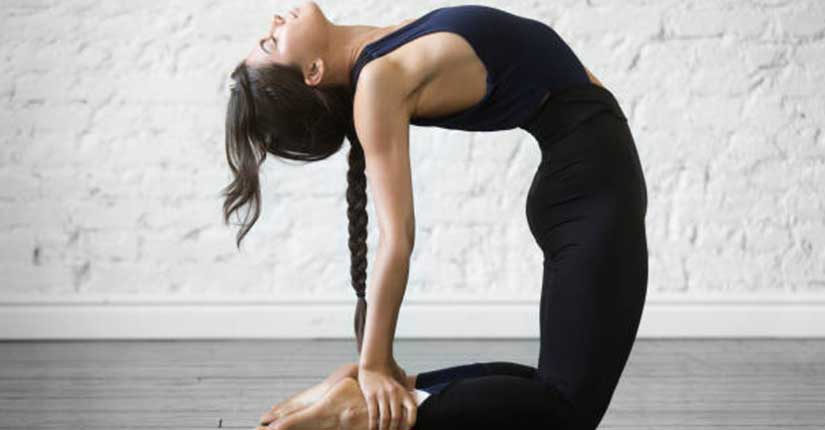
Bikram Yoga is a style of yoga developed by Bikram Choudhury in the 1970s. It is a specific sequence of yoga poses (asanas) practiced in a heated room. The typical Bikram Yoga class consists of a series of 26 poses and two breathing exercises, all performed in a specific order.
The classes are conducted in a room heated to around 105 degrees Fahrenheit (40 degrees Celsius) with a humidity level of 40%. The heat and humidity are intended to enhance flexibility, increase circulation, and promote detoxification through sweating.
Bikram Yoga classes follow a fixed sequence, with each pose targeting specific parts of the body. The sequence is designed to work on strength, flexibility, balance, and endurance. The practice typically lasts 90 minutes and is practiced in a mirror-lined room to help practitioners observe their alignment and form.
Bikram Choudhury patented his sequence of poses and established a copyrighted format for teaching Bikram Yoga, including specific dialogue cues for instructors to follow. This led to a unique and consistent experience across different Bikram Yoga studios.
It’s important to note that Bikram Choudhury has been involved in controversial legal issues and allegations of misconduct. However, many yoga studios have adapted similar hot yoga practices without using the Bikram name or specific sequence, offering similar heated yoga classes with variations in the pose sequence and room temperature.
How to do bikram yoga
To practice Bikram Yoga, follow these general guidelines:
Find a studio: Look for a Bikram Yoga studio in your area. It’s best to learn the practice from a certified instructor who can guide you through the sequence and provide proper guidance.
Dress appropriately: Wear lightweight and breathable clothing that allows you to move comfortably. Avoid heavy fabrics that may restrict your movements.
Hydrate: Drink plenty of water before, during, and after the class to stay hydrated, as Bikram Yoga is practiced in a heated room.
Arrive early: Arrive at the studio early to sign in, set up your mat, and acclimate to the heat.
Warm-up: The class usually starts with a few minutes of breathing exercises to center yourself and prepare for the practice.
Follow the sequence: The instructor will guide you through a specific sequence of 26 poses, each held for a specific duration. Listen to the instructor’s cues and follow along to the best of your ability. The poses are designed to work different parts of your body and improve flexibility, strength, and balance.
Mind your breathing: Pay attention to your breath throughout the practice. Bikram Yoga emphasizes deep breathing through the nose and controlled exhalations.
Stay hydrated and take breaks: The heat and intensity of the practice can be challenging, so it’s important to listen to your body. If you feel overwhelmed or dizzy, take a break, rest, and drink water as needed.
Be mindful of your limits: Respect your body’s limits and avoid pushing yourself beyond what feels comfortable. It’s normal to experience discomfort and a challenging workout, but avoid pushing into pain or overexertion.
Cool down and relax: The class typically ends with a few minutes of relaxation and a final resting pose, such as Savasana, to allow your body to cool down and integrate the benefits of the practice.
Benefits of Bikram Yoga
Bikram Yoga is believed to offer several potential benefits for the mind and body. Here are some commonly reported benefits:
Improved flexibility: The heated environment of Bikram Yoga helps warm up the muscles, allowing for deeper stretches and increased flexibility over time. Regular practice can help improve range of motion and joint mobility.
Increased strength and muscle tone: The series of poses in Bikram Yoga target various muscle groups, helping to build strength, especially in the core, legs, and upper body. Holding the poses and repeating them over time can lead to improved muscle tone and endurance.
Enhanced cardiovascular fitness: The combination of heat and continuous movement in Bikram Yoga can provide a cardiovascular workout, increasing heart rate and promoting better cardiovascular health. The practice can help improve stamina and lung capacity.
Weight management: Bikram Yoga is a physically demanding practice that can contribute to weight loss and weight management when combined with a balanced diet and a healthy lifestyle. The heat and intensity of the practice can lead to increased calorie burn and improved metabolism.
Stress reduction: Like other forms of yoga, Bikram Yoga emphasizes mindful breathing and focus, which can help calm the mind, reduce stress, and promote relaxation. The meditative aspects of the practice may also improve mental clarity and promote a sense of well-being.
Detoxification: The heat and intense sweating in Bikram Yoga are believed to aid in detoxification by helping to eliminate toxins from the body through the skin. However, the scientific evidence supporting this specific claim is limited.
Improved balance and coordination: The series of poses in Bikram Yoga challenge balance and proprioception (body awareness), helping to improve coordination and stability over time.
© Indian Yoga Expert 2026 | All Rights Reserved
© Indian Yoga Expert 2026 | All Rights Reserved